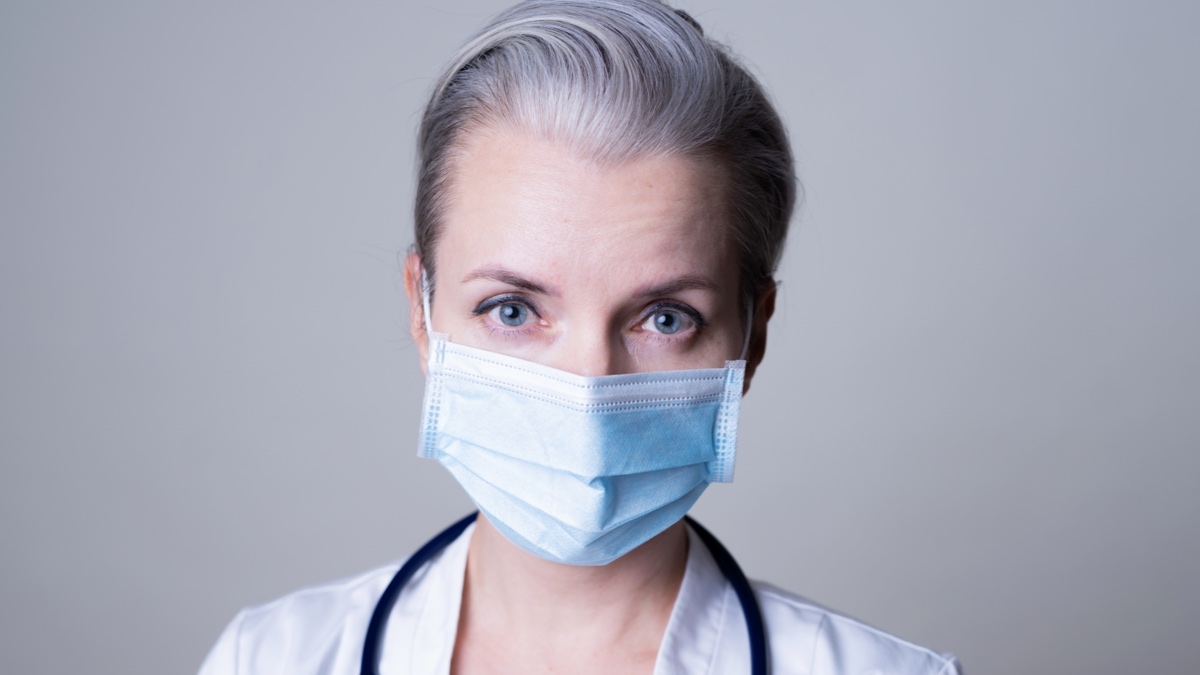Take this quiz to determine whether you are experiencing signs of caregiver burnout, and what to do about it.
This class will provide direct care workers (DCWs) with relevant information on the monkeypox virus. Direct care workers will learn the symptoms of monkeypox, how it is spread, and how to care for themselves and their care recipients.
Learning Objectives
After completing the learning resource, learners will be able to:
- Define monkeypox
- Describe the common symptoms of monkeypox
- Describe how monkeypox is transmitted
- Describe how to stay safe when caring for clients who are infected with monkeypox
- Recall that monkeypox is not a sexually transmitted disease
What do you know about monkeypox?
Answer the following questions to see what you already know about monkeypox.
1. True or False: You must have physical contact with someone with the disease to catch monkeypox.
This statement is false. While monkeypox is often spread by skin-to-skin contact, especially during sexual or intimate activity, it is not the only way of contracting the virus. Monkeypox can be contracted by touching fabrics or objects touched by someone with monkeypox that have not been disinfected.
2. Which one of the following is at highest risk for getting monkeypox?
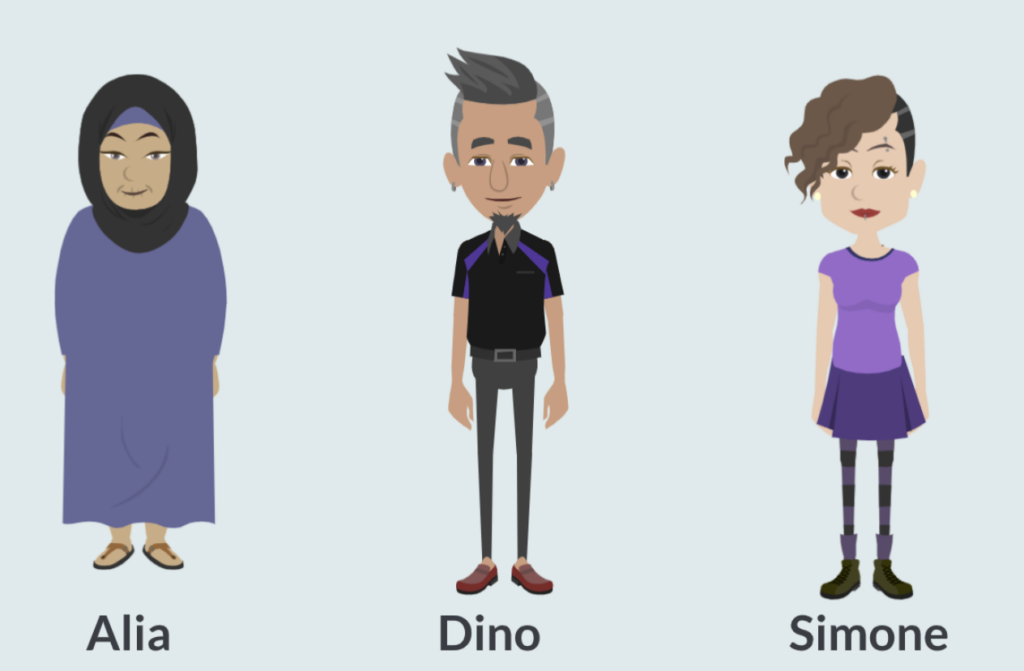
- Alia - An older woman who lives alone and seldom leaves home.
- Dino - A young gay man who attends sex parties every weekend.
- Simone - A transgender woman in an exclusive long-term relationship.
The correct answer is Dino. While anyone can get monkeypox, at the present time 99% of confirmed cases in the US have been among gay or bisexual men. People who have multiple or anonymous sex partners are at high risk of exposure.
3. True or False: You should wear a facemask or respirator when caring for a person with monkeypox.
This statement is true. Anyone in contact with a person with monkeypox for more than a brief encounter should wear a respirator or a well-fitting facemask when in close contact (i.e., within 6 feet).
How did you do? Keep reading to learn more about the symptoms and treatment of monkeypox, and how to care for and protect your client and yourself.
Definition of Monkeypox
What is monkeypox?
Monkeypox is a rare disease caused by infection with the monkeypox virus. Monkeypox virus is part of the same family of viruses as the virus that causes smallpox, but it is not related to chickenpox. Monkeypox symptoms are similar to smallpox symptoms but milder.
The first human cases of monkeypox were documented in 1970. Since then, cases have been rare and confined to central and western Africa. In 2022, cases began spreading globally and the World Health Organization declared monkeypox a public health emergency.
Who is at highest risk for getting monkeypox?
Anyone can get monkeypox. In the current outbreak, most U.S. cases have been among gay, bisexual, and other men who have sex with men. Those with multiple sex partners are at higher risk. However, anyone, regardless of sexual orientation or gender identity, who has been in close, personal contact with someone who has monkeypox is at risk.
Who is at high risk of severe disease from monkeypox?
Those at increased risk of severe outcomes from monkeypox include:
- Young children (<8 years of age)
- Pregnant women
- People with weakened immune systems
- People with a history of atopic dermatitis or eczema
Symptoms of Monkeypox
The most common symptom of monkeypox is a rash or sores that may look like pimples or blisters. The rash and sores may appear around and inside the genitals, anus, and mouth, or be all over the body. They may last for two to four weeks. The rash can be extremely itchy and painful and interfere with daily activities. Sores in the anus or urethra can make it hard to go to the bathroom. After healing, some people can have scarring in the areas where they had sores.
Additional symptoms include flu-like symptoms, such as sore throat, fever, and fatigue. Complications from monkeypox infection include inflammation of the rectal lining (proctitis).
Unlike other viral illnesses, a sign of monkeypox is the presence of painful, swollen lymph nodes. Days before a rash appears, there may be redness in the groin or genital area with painful swellings, which are lymph nodes.
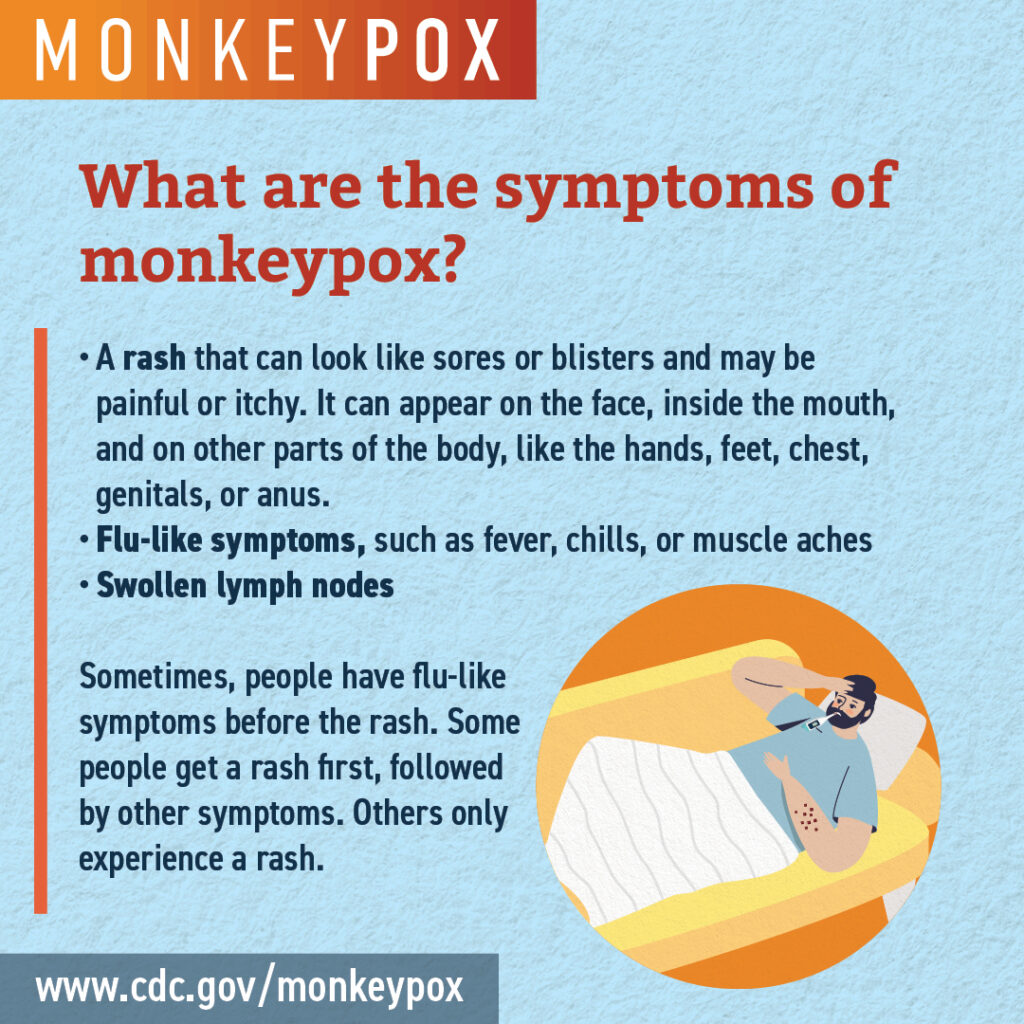
How long do symptoms last?
Monkeypox symptoms usually start within 3 weeks of exposure to the virus. The rash typically develops 1-4 days after any flu-like symptoms.
What does monkeypox look like?
Monkeypox cases tend to present with pimple-like lesions. The usual progression is from pustules to blisters that eventually scab over.

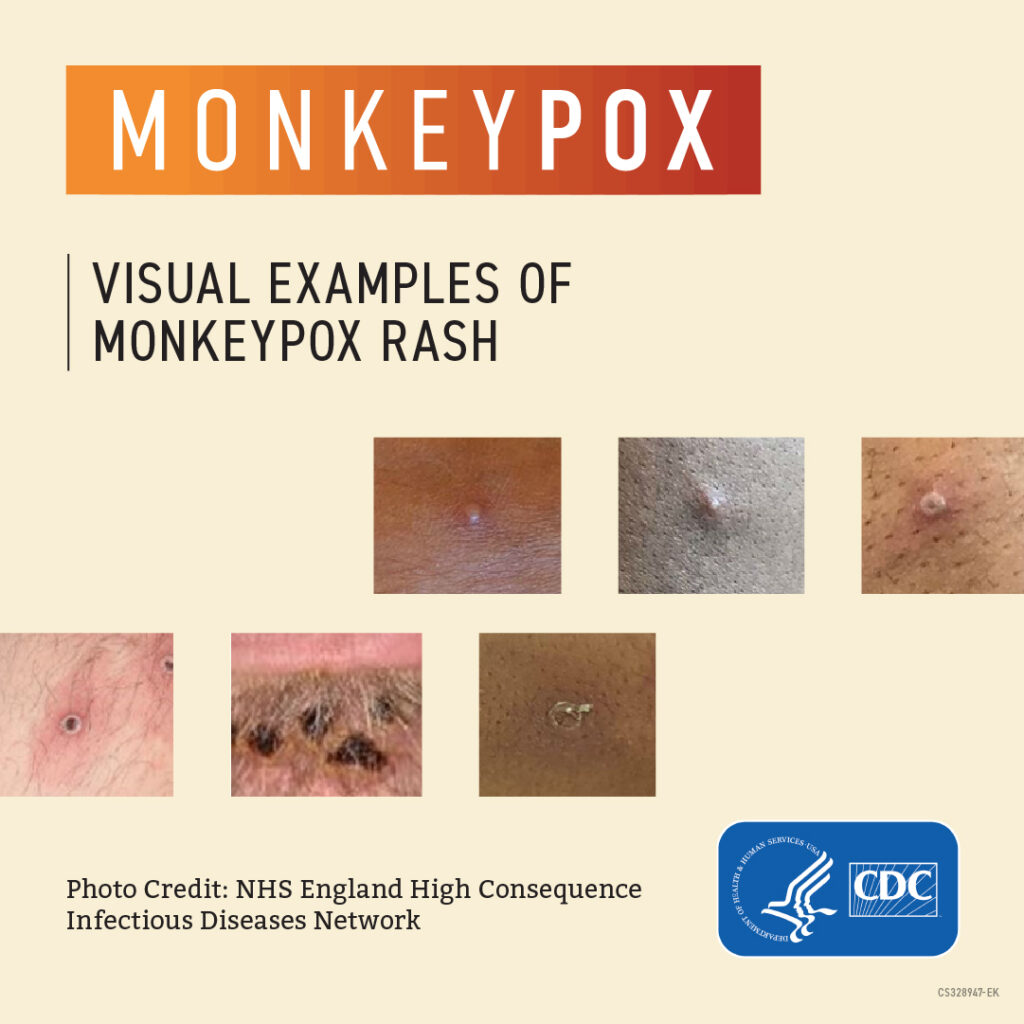
Is Monkeypox Fatal?
In the current outbreak, hospitalization and death from monkeypox are rare.
How is Monkeypox Transmitted?
Close or Intimate Contact
Monkeypox can spread to anyone through close, personal, often skin-to-skin contact. This includes:
- Direct contact with monkeypox rash, scabs, or body fluids from a person with monkeypox.
- Touching objects, fabrics (clothing, bedding, or towels), and surfaces that have been used by someone with monkeypox.
- Contact with respiratory secretions of someone with monkeypox.
This direct contact can happen during intimate contact, including:
- Oral, anal, and vaginal sex or touching the genitals (penis, testicles, labia, and vagina) or anus (butthole) of a person with monkeypox.
- Hugging, massage, and kissing.
- Prolonged face-to-face contact.
- Sharing bedding, towels, or clothes that have not been washed.
- Touching objects during sex that were used by a person with monkeypox and that have not been disinfected, such as bedding, towels, fetish gear, and sex toys.
It is not yet clear if it can be spread through semen, saliva, feces (poop), or other body fluids.
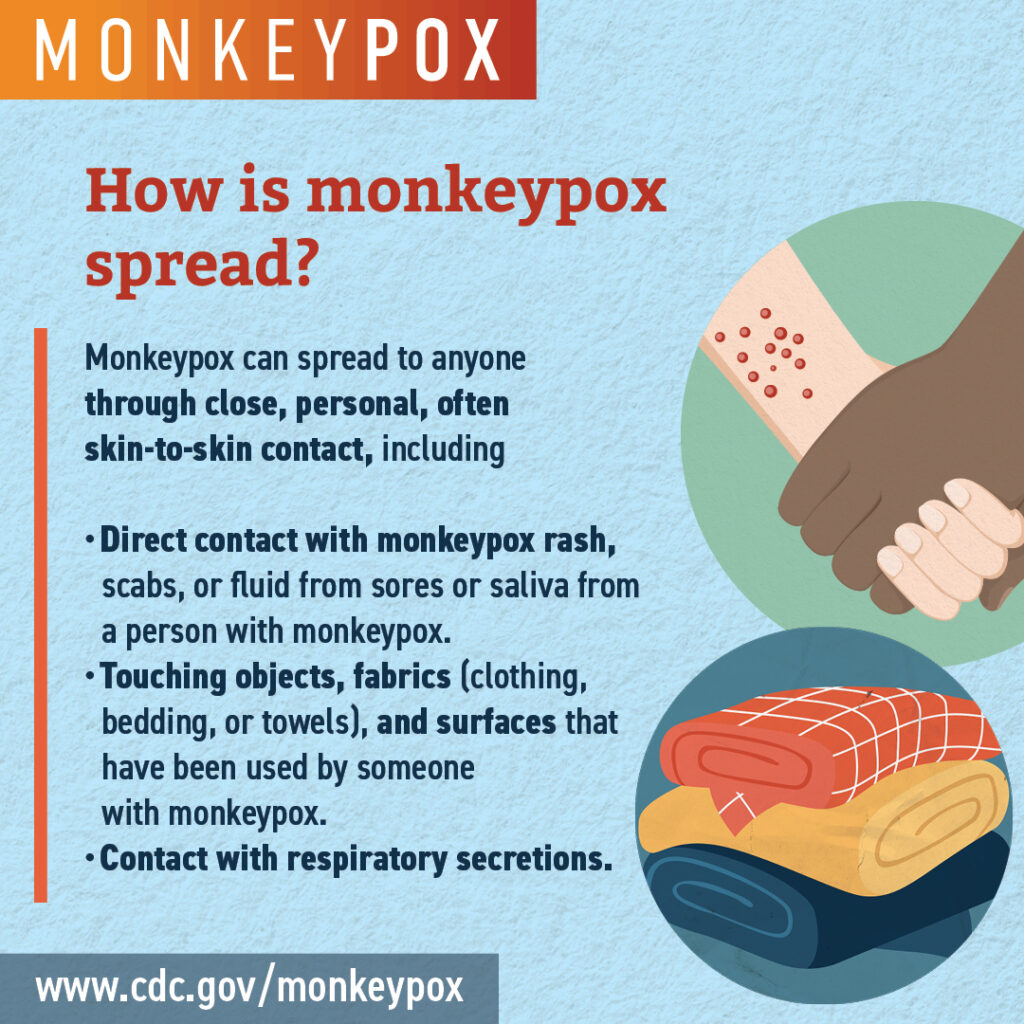
Other Methods of Transmission
A pregnant person can spread the virus to their fetus through the placenta.
It’s also possible for people to get monkeypox from infected animals, either by being scratched or bitten by the animal or by preparing or eating meat or using products from an infected animal.
A person with monkeypox can spread it to others from the time symptoms start until the rash has fully healed and a fresh layer of skin has formed. The illness typically lasts 2–4 weeks.
Is Monkeypox a Sexually Transmitted Disease?
While monkeypox is usually transmitted by intimate physical contact, it is not considered a sexually transmitted disease. It is more accurately described as “sexually transmissible.” In other words, sex is just one of the ways that monkeypox can be spread.
In the current monkeypox outbreak, the virus is spreading primarily through close personal contact. The contact does not have to be exclusively intimate or sexual.
Preventing and Treating Monkeypox
Testing for Monkeypox
People who think they have monkeypox or have had close personal contact with someone who has monkeypox should visit a healthcare provider. If the healthcare provider determines that testing is needed, they will collect the specimens and send them to a laboratory for testing,
To get a specimen to test, the healthcare provider will use a swab to rub vigorously across the lesions of the rash. They will take swabs from more than one lesion.
Test results are usually available within a few days.
Test Results
- Positive: Individuals should take steps to care for themself and protect others until they have completely recovered from their infection.
- Negative: The test did not detect the virus and the individual probably does not have monkeypox. They should continue to take steps to protect themself and others.
- Inconclusive: An inconclusive test means the test will need to be conducted again because not enough of the specimen was taken.
Tests conducted by public health departments are usually free. Testing referrals from a private healthcare provider to a commercial lab or tests done in the hospital may involve a fee.
Treating Monkeypox
There is no treatment specifically for monkeypox, however, most people recover in 2 – 4 weeks without additional medical treatment.
Anyone with symptoms of monkeypox should talk to a healthcare provider, even if they didn’t think they had contact with someone with monkeypox.
While there are no treatments specifically for the monkeypox virus, antiviral drugs developed to protect against smallpox may be used to treat monkeypox infections.
Preventing Monkeypox
Monkeypox can be prevented by following these recommendations:
- Practice proper hand hygiene with soap and water
- Clean and disinfect high-traffic surfaces regularly
- Practice safe sex, including the use of condoms and dental dams
- Avoid contact with contaminated clothes or bedding
- Avoid contact with infected people
Vaccines
CDC is not encouraging vaccination for the broader public or for everyone who is sexually active. Vaccines are recommended for individuals who have been exposed to the virus, and healthcare workers treating monkeypox cases.
Individuals who have engaged in high-risk behaviors or think they have been exposed to monkeypox should consider getting vaccinated. A monkeypox vaccine given within four days of exposure has the best chance of preventing disease, but even up to two weeks after exposure it can reduce the severity of the symptoms.
JYNNEOS vaccine (Imvamune or Imvanex)
The JYNNEOS vaccine is licensed to treat smallpox and monkeypox in people 18 years and older. It is administered by injections, four weeks apart. It is about 85% effective, according to the CDC. There have been limited supplies of JYNNEOS, so some providers may offer the ACAM200 as an alternative.
ACAM2000 vaccine
The ACAM2000 vaccine is an older vaccine approved for smallpox. It can be used to prevent monkeypox disease in people aged one year and older who have been determined to be at high risk for infection.
The ACAM2000 vaccine can be administered as a single injection. Peak immunity is expected to be reached 4 weeks after administration. The duration of immunity is unknown; however, a booster dose is recommended every 3 years.
ACAM2000 contains live vaccinia virus, so it should not be given to people with the following conditions:
- Weakened immune systems
- Heart disease, some eye diseases
- Certain skin conditions such as eczema or psoriasis
- Pregnancy
The ACAM2000 vaccine may have serious side effects. Speak with your healthcare provider to weigh the benefits against the risks.
Caring for Clients with Monkeypox at Home
Tips for Caring for a Client with Monkeypox
View the video to learn some strategies for caring for a client with the monkeypox virus.
Isolation
People with monkeypox should isolate at home, if possible, for the duration of the illness (typically 2-4 weeks). The infected individual should:
- Stay home and not leave except for medical appointments or emergencies.
- Stay away from others in the home, including pets. If possible, stay in a separate bedroom and use a separate bathroom.
- Wear a well-fitting facemask, if staying away from others is not possible. Masks should fit closely on the face without any gaps along the edges or around the nose and be comfortable when worn properly over the nose and mouth.
- Cover all parts of the rash or lesions with clothing, gloves, and/or bandages.
- Keep skin lesions/rash clean and dry when not showering or bathing.
- Don’t pop or scratch the rash or shave the area with the rash until the scabs have fallen off and a new layer of skin has formed.
- Avoid sharing personal items that might be contaminated, such as bed linens, clothing, towels, washcloths, drinking glasses, or eating utensils.
- Wash hands often with soap and water or use an alcohol-based hand sanitizer if soap and water are not readily available.
- Change their own bandages and handle contaminated linens, if possible. They should wear disposable gloves, and wash hands immediately after removing the gloves.
- Eat healthy and get plenty of rest to allow themselves to heal.
Protecting Yourself and Others Against Monkeypox
Hand Hygiene and Personal Protective Equipment
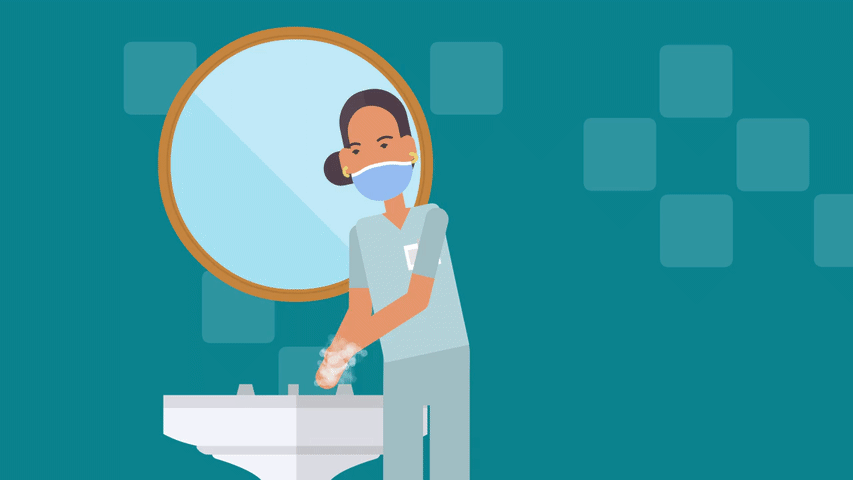
Use appropriate hand hygiene and personal protective equipment (PPE) when caring for clients infected with monkeypox, or if an infection is suspected.
- Hand hygiene. Use an alcohol-based hand rub or wash hands with soap and water after touching rash material, clothing, linens, or environmental surfaces that the client may have used.
- Masks. Use a well-fitting respirator or medical mask worn properly over the nose and mouth when in close contact (e.g., within 6 feet) with the client for more than a brief encounter.
- Gloves. Wear disposable gloves when changing a client’s dressings or having any other physical contact. Dispose of gloves after use, then wash hands.
- Gowns. Wear a disposable gown or immediately launder any clothing that contacts the rash during dressing changes.
- Eye protection. Wear goggles or a face shield that covers the front and sides of the face.
Protect Others in the Home
The CDC offers guidance for how to prevent the spread of monkeypox to others when sharing a living space.
Cleaning and Disinfection
When a client’s monkeypox virus is infectious, their body fluids, respiratory secretions, and lesion material can contaminate the environment. Poxviruses can survive in linens, clothing, and on environmental surfaces, particularly when in dark, cool, and low-humidity environments. You can protect yourself and others in the client’s home by taking care to clean, disinfect, and dispose of waste appropriately.
Clean and disinfect household in the following order:
- General waste containment
Collect and contain in a sealed bag any soiled waste such as bandages, paper towels, food packaging, and other general trash items.
- Laundry
Gather contaminated clothing and linens before anything else in the room is cleaned. Do not shake the linens as this could spread infectious particles.
- Hard surfaces and household items
- Soft furnishings
- Carpet and flooring
- Waste disposal
In general, it is important to:
- Routinely clean and disinfect commonly touched surfaces and items (such as light switches).
- Disinfect any shared spaces or items immediately after use.
- Wear PPE. At a minimum, wear disposable medical gloves and a respirator or well-fitting mask if cleaning and disinfecting.
- Not to dry dust or sweep because this might spread infectious particles.
- Use wet cleaning methods, such as disinfectant wipes, sprays, and mopping.
- Vacuum using a vacuum with a high-efficiency air filter. If that type of vacuum is not available, wear a well-fitting mask or respirator when vacuuming.
Hard Surfaces and Household Items
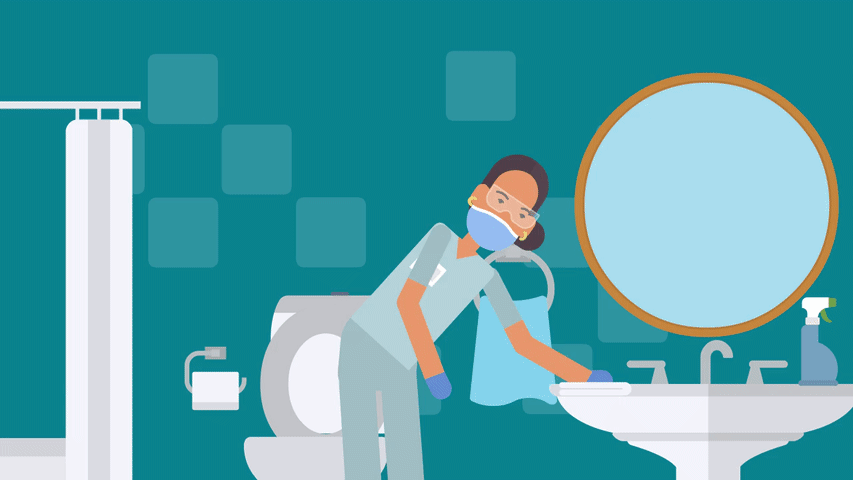
Items and surfaces within the home that have likely not been in contact with the person while sick with monkeypox do not need to be disinfected.
- Routinely clean and disinfect commonly touched surfaces and items (such as tables, countertops, door handles, toilet flush handles, faucets, light switches, and floors) using an EPA-registered disinfectant in accordance with the manufacturer’s instructions.
- Wash soiled dishes and eating utensils in a dishwasher with detergent and hot water or by hand with hot water and dish soap.
Soft Furnishings (Upholstered furniture, carpets, rugs, and mattresses)
If the person with monkeypox had minimal contact with soft furnishings, disinfect the surface with a surface-appropriate disinfectant.
If the person with monkeypox had direct skin contact and/or excessive drainage of fluids from rashes onto soft furnishings, consider steam cleaning.
Carpet and Flooring
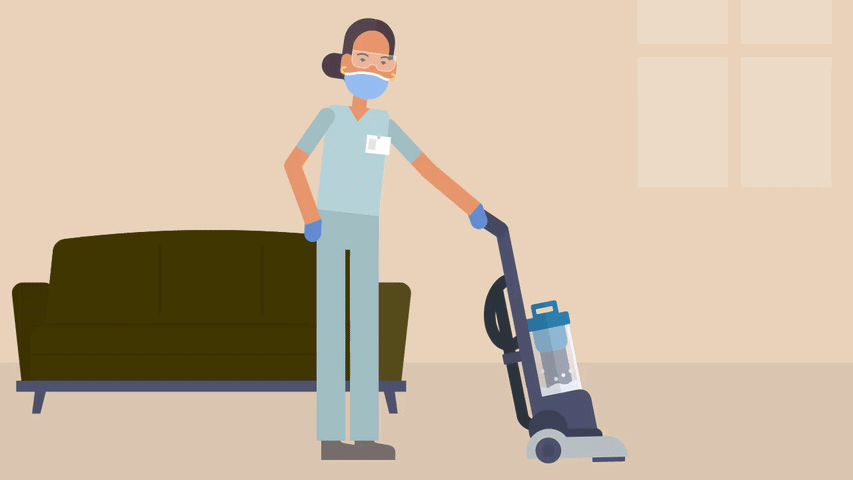
- Do not dry dust or sweep as this may spread infectious particles.
- Wet cleaning methods are preferred such as disinfectant wipes, sprays, and mopping.
- Vacuuming is acceptable using a vacuum with a high-efficiency air filter. If not available, the person vacuuming should wear a well-fitting mask or respirator.
Laundry

If possible, people with monkeypox should handle and launder their own soiled laundry.
When handling laundry for a person with monkeypox:
- Avoid contact with soiled laundry. Wear PPE (mask, gloves, eye protection, gown) when handling soiled laundry.
- Contain used or contaminated clothing, linens and bedding materials, towels, and other fabric items until laundering.
- Do not mix laundry of other members of the household with the client’s.
- Place soiled laundry in an impermeable container or bag that can be disinfected afterward.
- Do not shake or handle soiled laundry in a manner that may spread infectious particles.
Waste Disposal
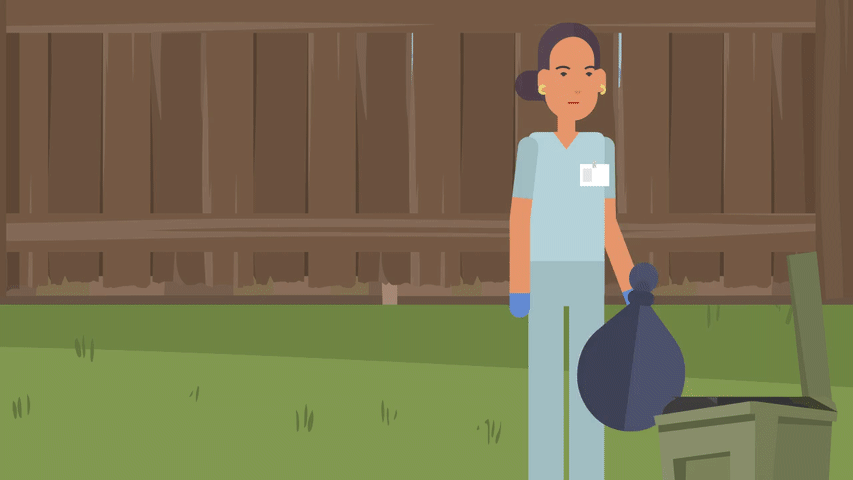
The person with monkeypox should use a dedicated, lined trash can in the room where they are isolating.
Any gloves, bandages, or other waste and disposable items that have been in direct contact with skin should be placed in a sealed plastic bag, then thrown away in the dedicated trash can.
Anyone removing garbage bags and handling and disposing of trash should wear gloves.
The CDC has detailed information on how to clean and disinfect the home.
Monitor Your Health
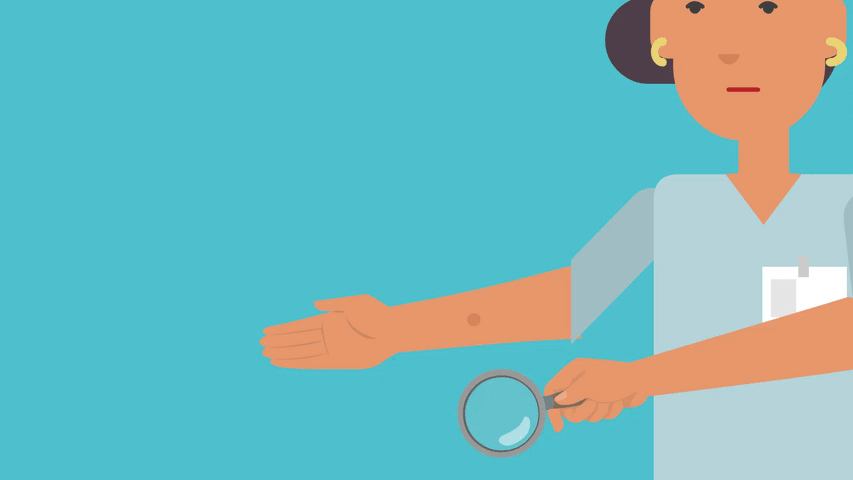
Monitor yourself for monkeypox symptoms:
- Skin rash on any part of your body (even if it is only 1 or 2 spots)
- Fever, chills, headache, muscle aches, and back aches
- Swollen lymph nodes
If you develop any of these symptoms, call your healthcare provider right away to get tested, and, if needed, treatment. Symptoms may take up to 21 days after exposure to develop.
Monkeypox FAQ
Can pets get monkeypox?
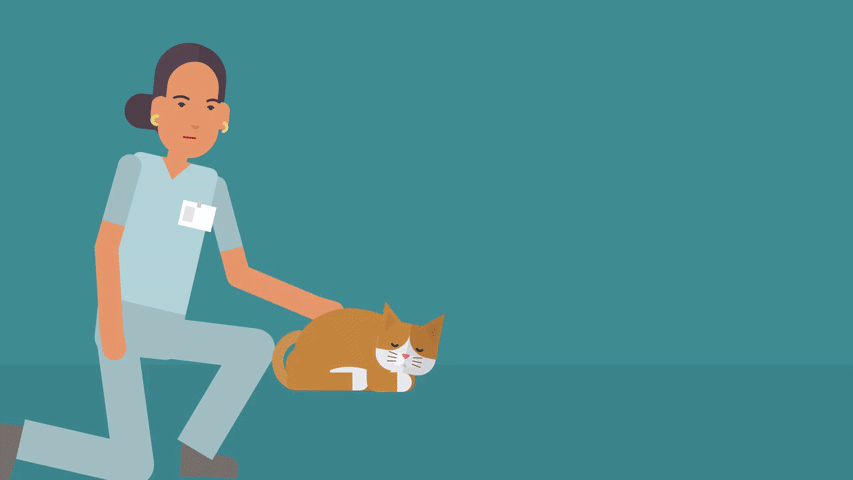
Monkeypox can spread from people to certain animals through close contact, including petting, cuddling, hugging, kissing, licking, sharing sleeping areas, and sharing food. People with monkeypox should avoid contact with mammals, including domestic animals and wildlife, to prevent spreading monkeypox.
- It is important to make sure the pet does not come into contact with the person’s rash, body fluids, or contaminated objects, such as bed linens, clothing, towels, or bandages.
Check the CDC website for further guidance on how to care for pets with monkeypox.
Is monkeypox fatal?
The form of monkeypox currently in the U.S. is rarely fatal. Over 99% of people who get this form of the disease are likely to survive. However, people with weakened immune systems, children under 8 years of age, people with a history of eczema, and people who are pregnant or breastfeeding may be more likely to get seriously ill or die.
Is monkeypox riskier for people with HIV?
During the current monkeypox outbreak, there does not appear to be more severe monkeypox illness in people who have HIV and are virally suppressed. However, people with HIV who are not virally suppressed may be at increased risk for severe illness and death from monkeypox.
People with HIV should follow the same recommendations as everyone else to protect themselves from monkeypox.
What should I do if I get monkeypox?
If you have been diagnosed with monkeypox, it’s important to notify your close contacts as soon as possible. Let them know that they may have been exposed to monkeypox and recommend they watch for signs and symptoms, get tested, isolate if they have symptoms, and consider getting vaccinated.
Final Test
It's Time to See What You've Learned
Now that you've gone through the material in this self-study class, it's time to move on to the Final Test.
Congratulations!
Thank you for completing this learning resource on monkeypox. Staying informed is the best way to protect yourself, your client, and your loved ones.
Review the sources used to create this material and to get additional information on monkeypox.
Share this resource with your co-workers to help them be better informed about this virus.






